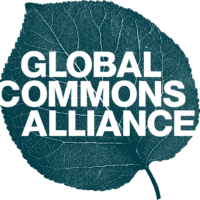
In an era marked by escalating environmental and climate crises, the imperative for urgent and concerted action has never been clearer. From the accelerating loss of biodiversity to the relentless march of climate change, the challenges posed by nature degradation reverberate across every aspect of our lives, from the businesses we operate to the homes we inhabit and the natural resources we depend upon. Amidst these mounting threats, the concept of Nature Positive has emerged as a beacon of hope – a guiding light that all can get behind.
The sheer scale of the environmental crises facing our world are staggering. Biodiversity loss, driven by habitat destruction, overexploitation of resources, pollution, and climate change, has reached unprecedented levels, with species disappearing at rates unparalleled in human history. We are devouring resources – the equivalent of 1.6 Planet Earths is used to maintain the current way of life and that number is a global average – wealthy countries consume much more. We are living beyond our means.
It goes further: the 2024 WEF Risk Report predicts that environmental risks could hit the point of no return. Biodiversity loss and ecosystem collapse and critical change to Earth systems are ranked in the world’s top ten short-term risks. Extreme weather events are viewed as the number one risk likely to present a material crisis on a global scale in 2024.
Evidence is mounting, and the need for urgent and coordinated action is clear. The impacts of climate change and nature loss are profound and will not be felt equally, which is why it is essential that we all act, and those with more means do more.
Genesis of the Nature Positive Global Goal
The overarching Nature Positive global goal, to ‘halt and reverse nature loss by 2030 on a 2020 baseline, and achieve full recovery by 2050’, was developed in 2019 by a group of CEOs from environmental organizations, sustainable business platforms and research institutions. It was created to advocate for an ambitious, science-based and measurable global goal for nature backed up by ambitious actions at the UN CBD COP15 in 2022, where the world came together to agree on a way forward for nature.
We already have a global goal for climate that commits all parties to keep global warming to well below 2, preferably to 1.5 degrees Celsius, compared to pre-industrial levels. Nature Positive provides a sister goal for biodiversity through a shared ambition to reverse nature loss for the benefit of all people and the planet.
In 2021, the first major paper was published which argued for the adoption of a Nature Positive Global Goal with three measurable objectives: zero net loss of nature from 2020, net positive by 2030, and full recovery by 2050. To be fully realized it recommended it should be combined with development and climate goals as equitable, net-zero and nature-positive. The outlines of a measurable goal for nature were established.
Then an historic moment. The adoption of an ambitious framework to tackle the nature crisis in December 2022 at the UN CBD COP16 saw 193 countries come to a final consensus and the Kunming-Montreal Global Biodiversity Framework was adopted. The Biodiversity Plan, now in place, unites the world. It adopted the definition of Nature Positive through its behind the overarching mission statement to halt and reverse nature loss. It includes 4 goals for 2050 and 23 targets for 2030, which also support the achievement of the Sustainable Development Goals and builds on previous strategic plans to live in harmony with nature by 2050.
Applying and Measuring Nature Positive
At its core, Nature Positive represents a paradigm shift in how we perceive and interact with the natural world. It emphasizes not only the preservation of existing ecosystems but also the active restoration and regeneration of degraded landscapes. By adopting a holistic view that encompasses the abundance, diversity, integrity, and resilience of species, ecosystems, and natural processes, Nature Positive provides a clear goal that progress can be measured against.
Central to the ethos of Nature Positive is the principle of “protect what is left and improve the rest.” While acknowledging that some losses may be unavoidable, it calls for concerted efforts to safeguard biodiversity hotspots and mitigate negative impacts through innovative conservation approaches. By embracing the concept of net-positive outcomes, stakeholders can strive not only to minimize harm but also to actively restore and enhance natural capital for the benefit of future generations.
The definition of Nature Positive and the Nature Positive Initiative
The Nature Positive Initiative formally launched in 2023.The Initiative aims to promote greater integrity and implementation of Nature Positive by 2030 and is made up of a core group of 27 organizations including some of the biggest global environmental organizations, businesses and financial institutions.
It aims to foster alignment and coordinate Nature Positive by 2030 efforts as well as grow the movement. Diverse stakeholders represent different sectors, allowing input and direction, and the definition of Nature Positive was released in October 2023 supported by all 27 partners.
The definition outlines three key categories of metrics that should be used to measure Nature Positive – retaining and restoring 1) species, 2) ecosystems, and 3) natural processes at all scales. By looking at things like the richness, distribution and abundance of species, alongside ecological integrity of habitat and hydrological activity and carbon sequestration, as well as other similar metrics, we will get a more accurate picture of whether there is more nature by 2030 than there is today, and as such we will know if we have made things better or worse.
The next step for the Nature Positive Initiative will be to build consensus around how to practically measure nature positive and how this can be applied with integrity and in a practical and affordable way. Some actors have suggested that they want to directly attribute their actions as nature positive – but without clear alignment on metrics such claims are impossible to assess. That’s why, in May 2024, the Nature Positive Initiative teamed up with Ernst & Young (EY) and The Biodiversity Consultancy to foster consensus on the metrics of nature positive.

Meanwhile, regulators such as the EU Corporate Sustainability Reporting Directive (CSRD) are now requiring many companies to disclose their material impacts and dependencies on natureClear metrics will be essential for this. It is imperative that all actors contribute sufficiently to the global goal of reversing nature loss, and while some are starting on that journey such as through piloting the guidance provided by the Taskforce for Nature-related Financial Disclosures and Science-Based Targets Network, there is opportunity for many more – in fact each and every – market participant to begin their nature positive journey.
Nature Positive cuts across society. From Indigenous Peoples, the stewards of much of our world’s remaining biodiversity, to businesses and financial institutions who rely on nature’s resources to fuel the economy, and everyone in between. We all have a role to play to secure nature-positive outcomes and must be part of the process. We must shift to properly recognize the whole-system approach in order to truly realize a world where biodiversity is valued, conserved and restored, delivering essential benefits for all people.
There may be a long way to go, but one thing is sure: to see a way through the dark, we need a torch. The nature crisis is still relatively unknown compared to the climate disasters we see every day in the news. It takes early adopters and trail blazers to make the difference. In the next months and years Nature Positive can align and direct action so that we can have one overall outcome – to be Nature Positive by 2030, for our planet and every one of us.




























